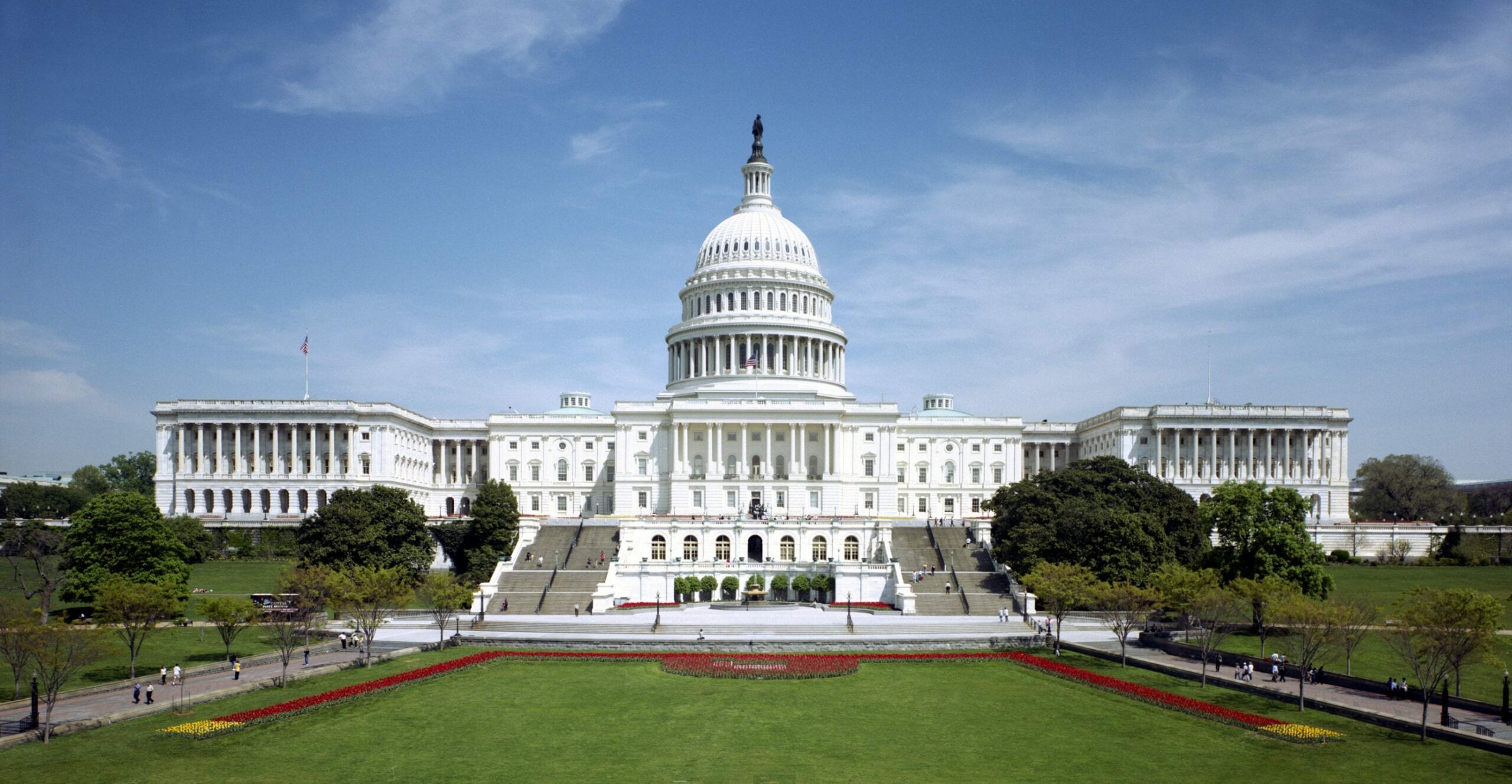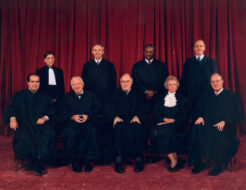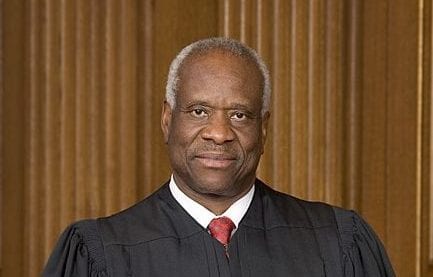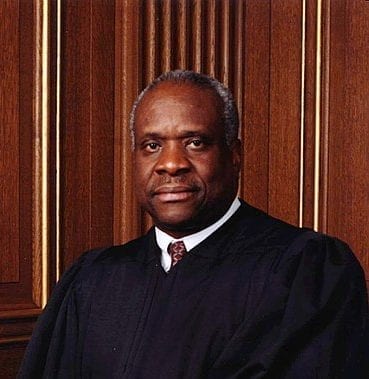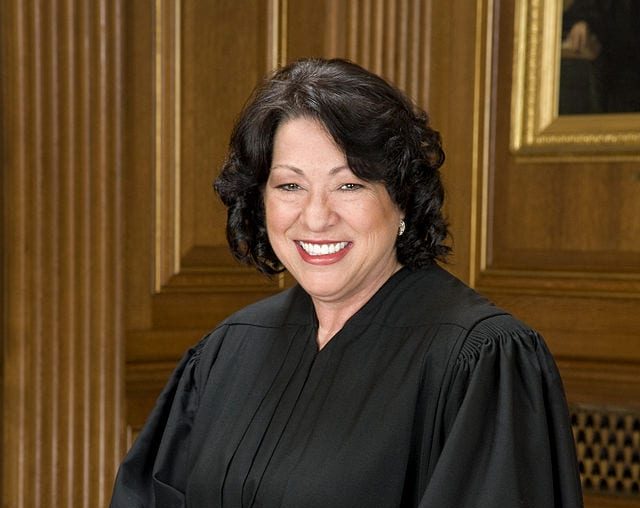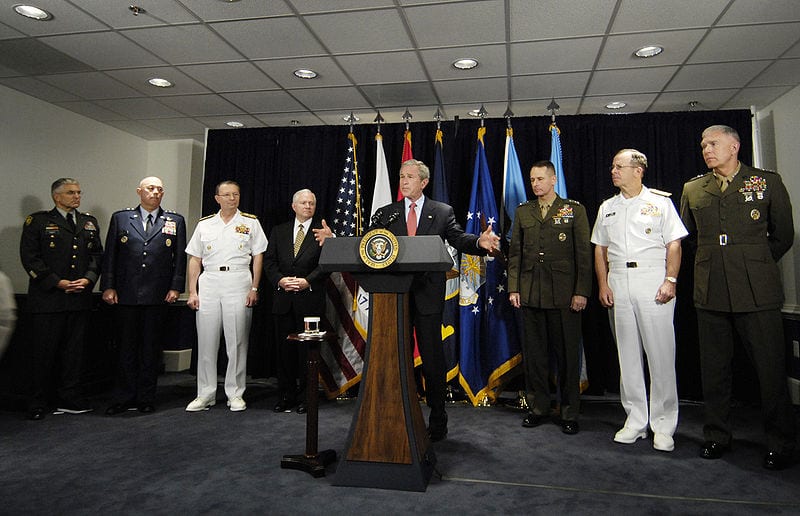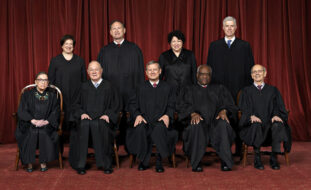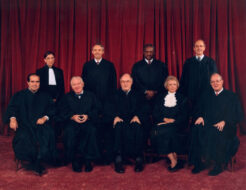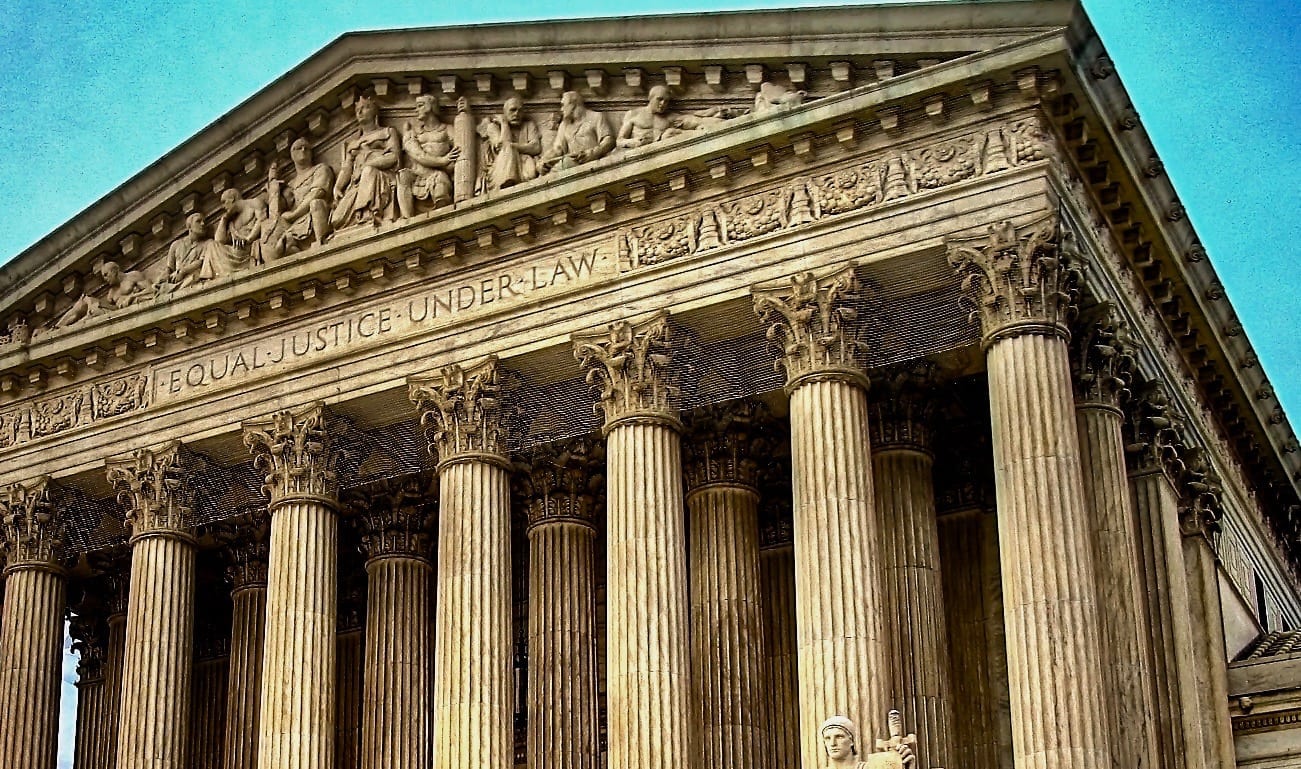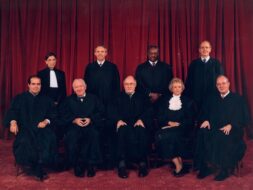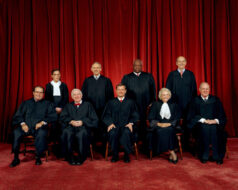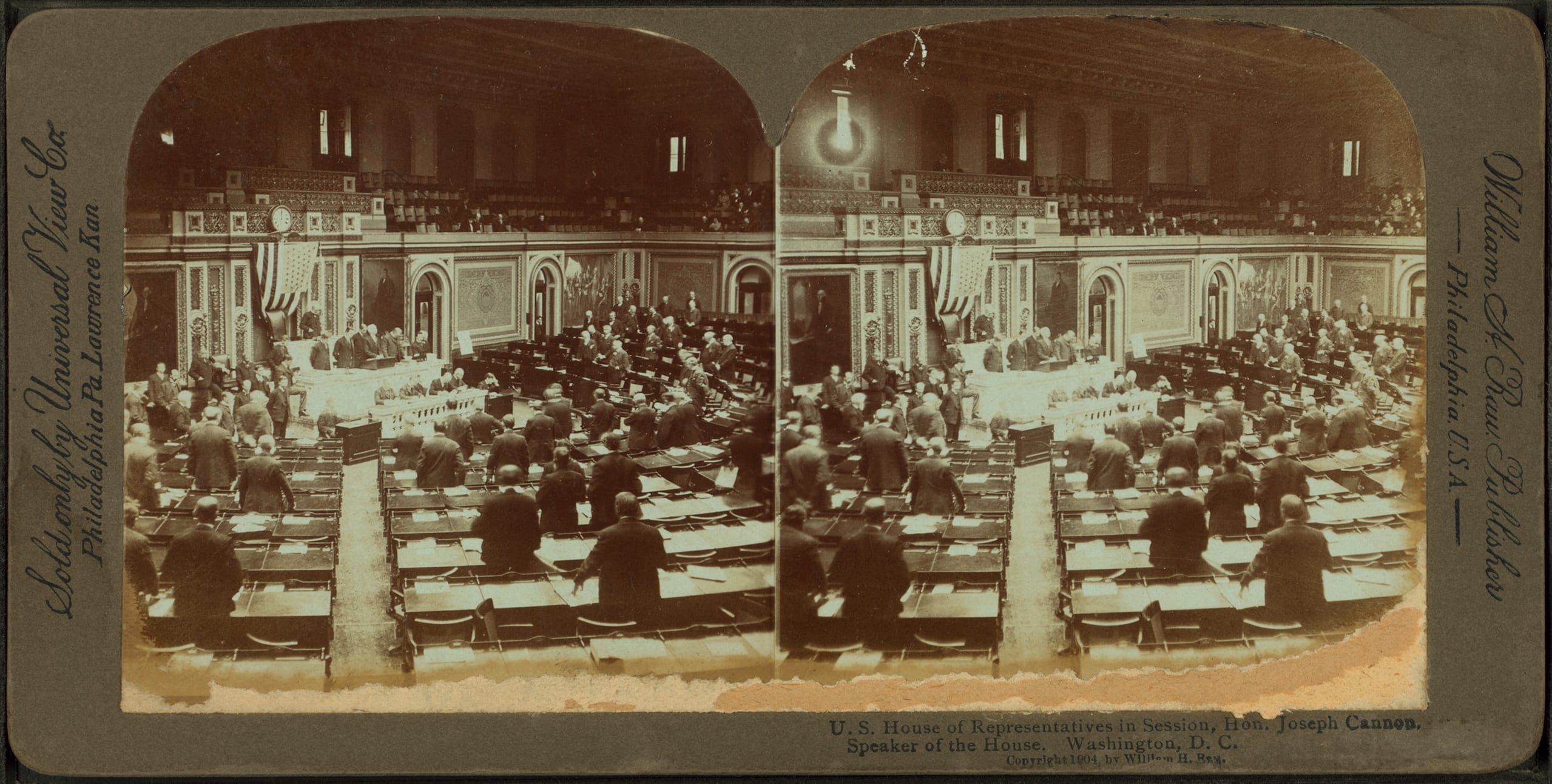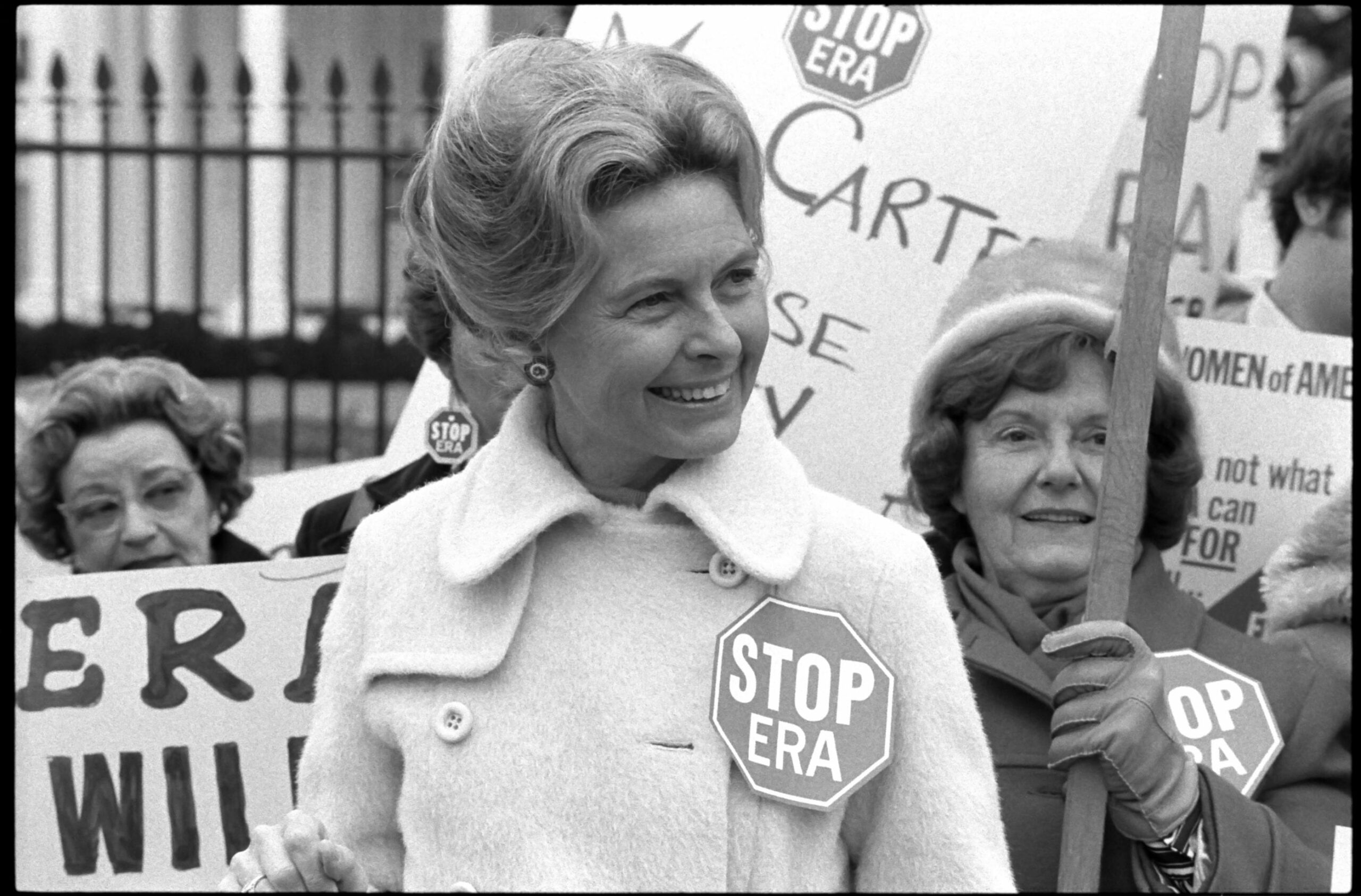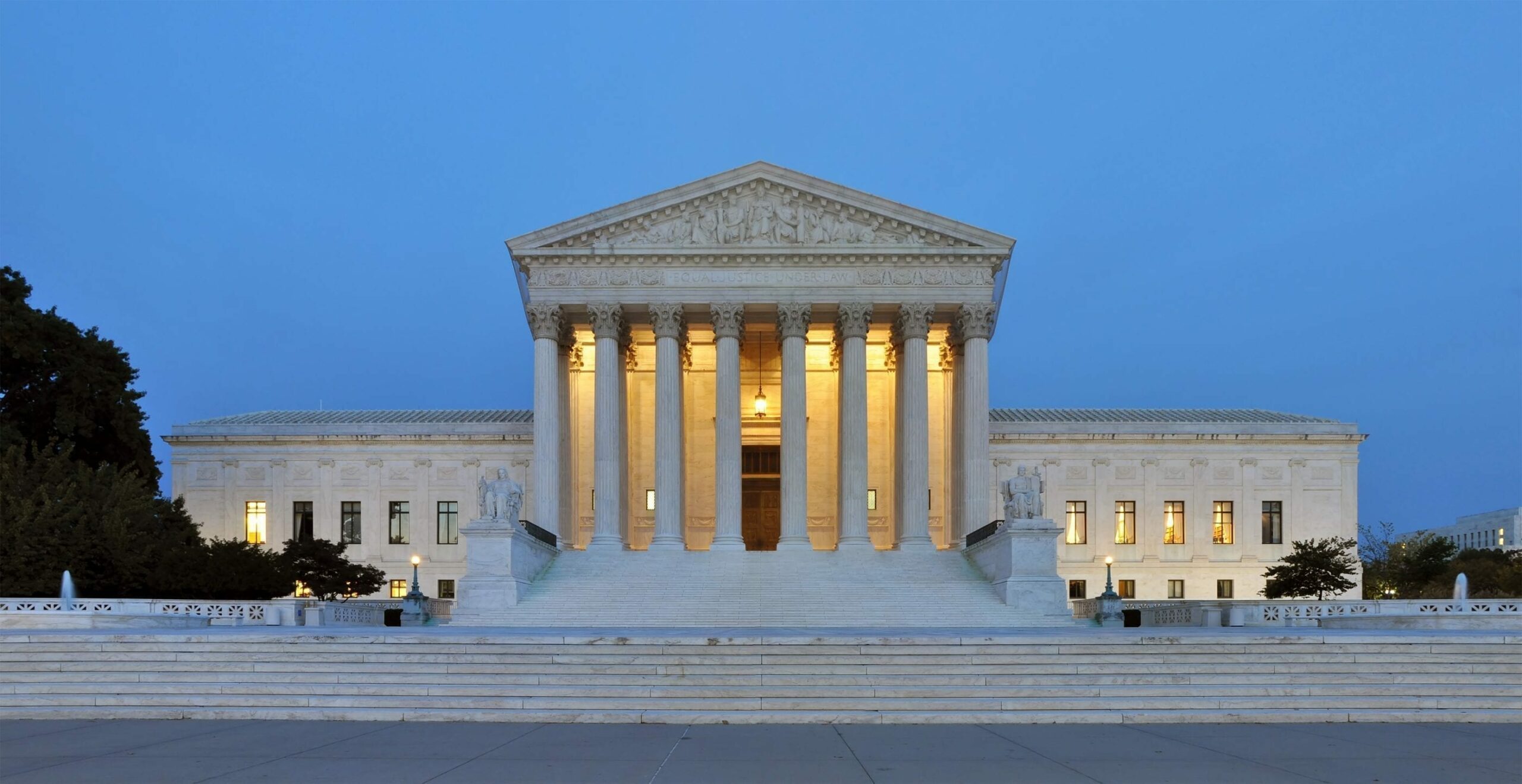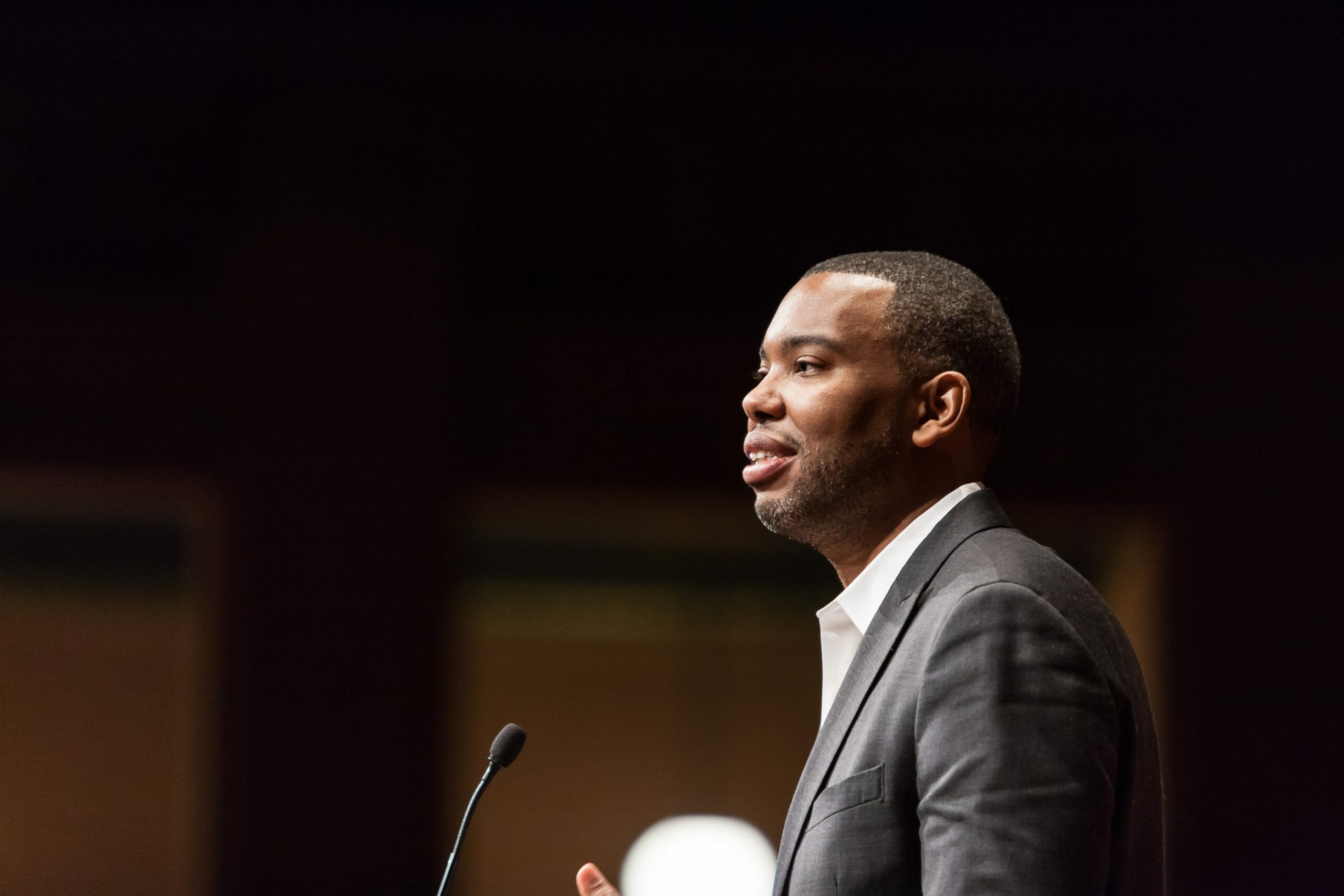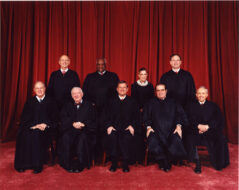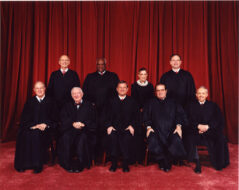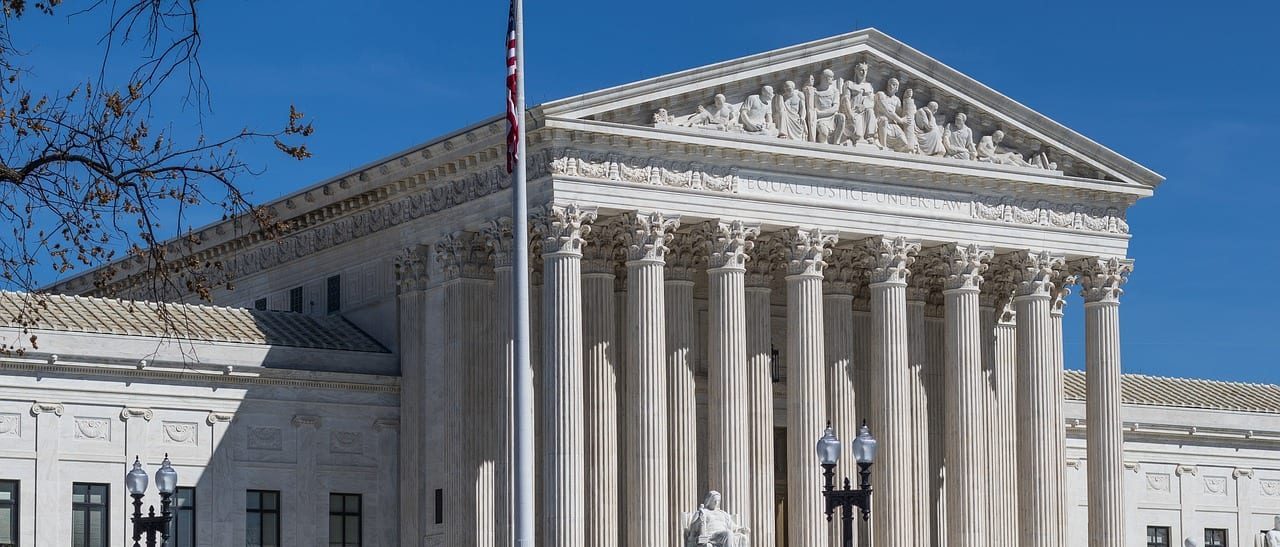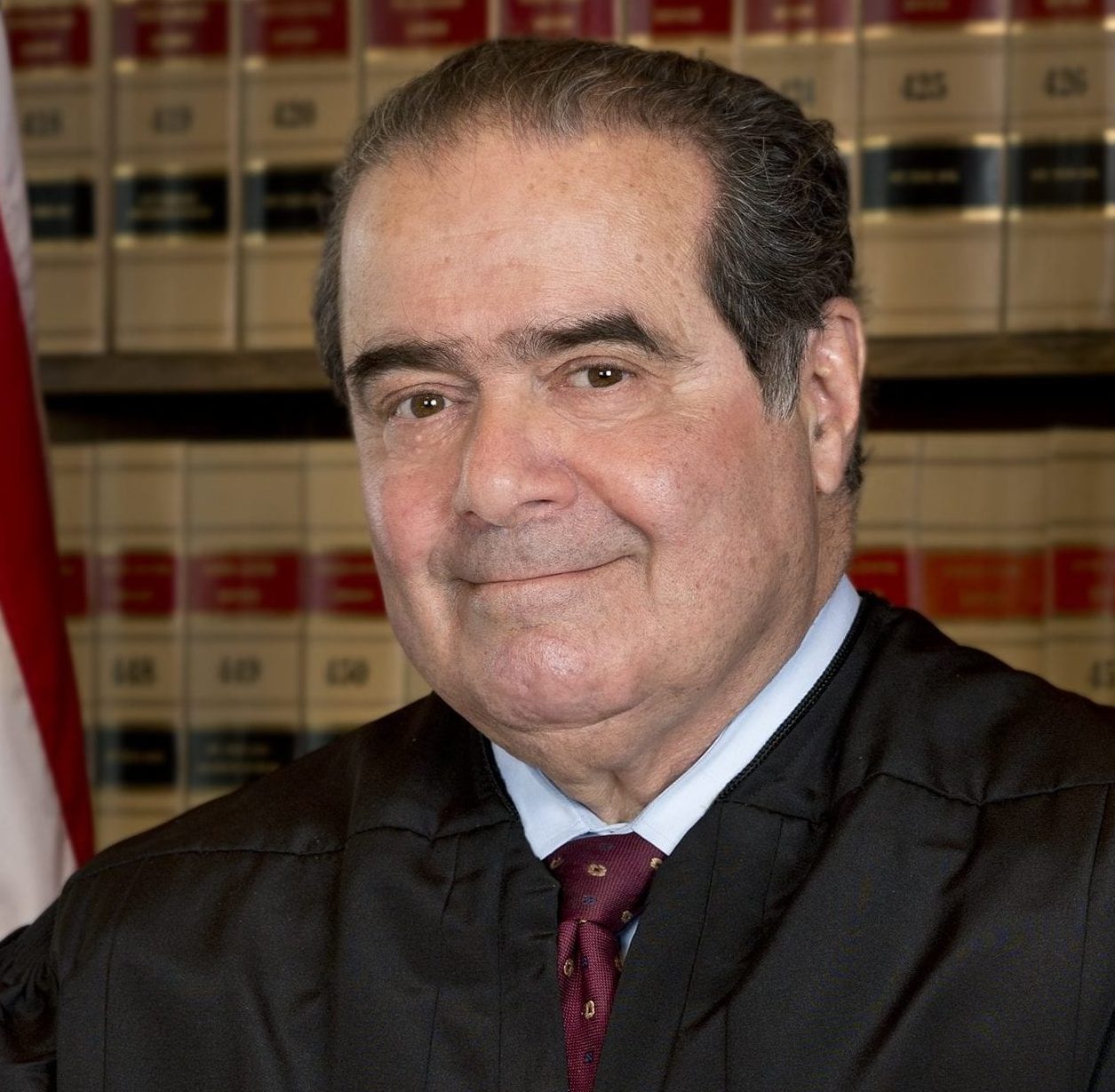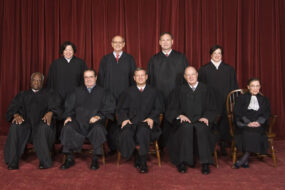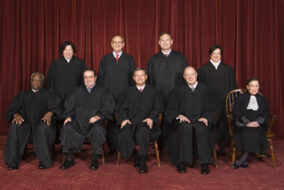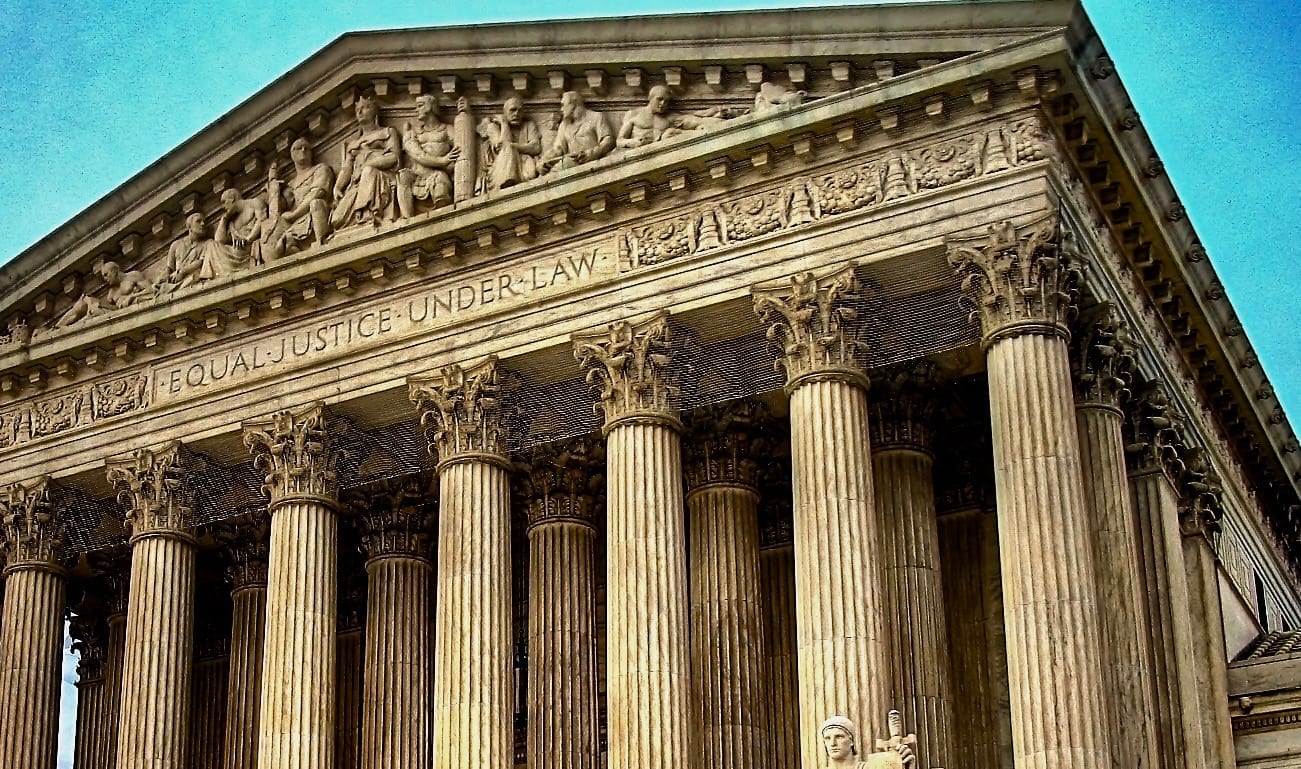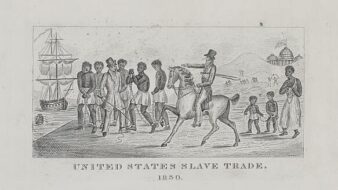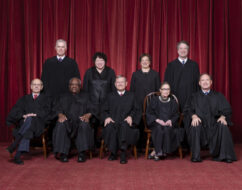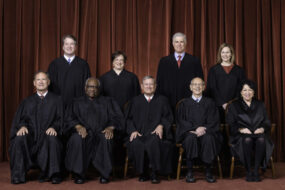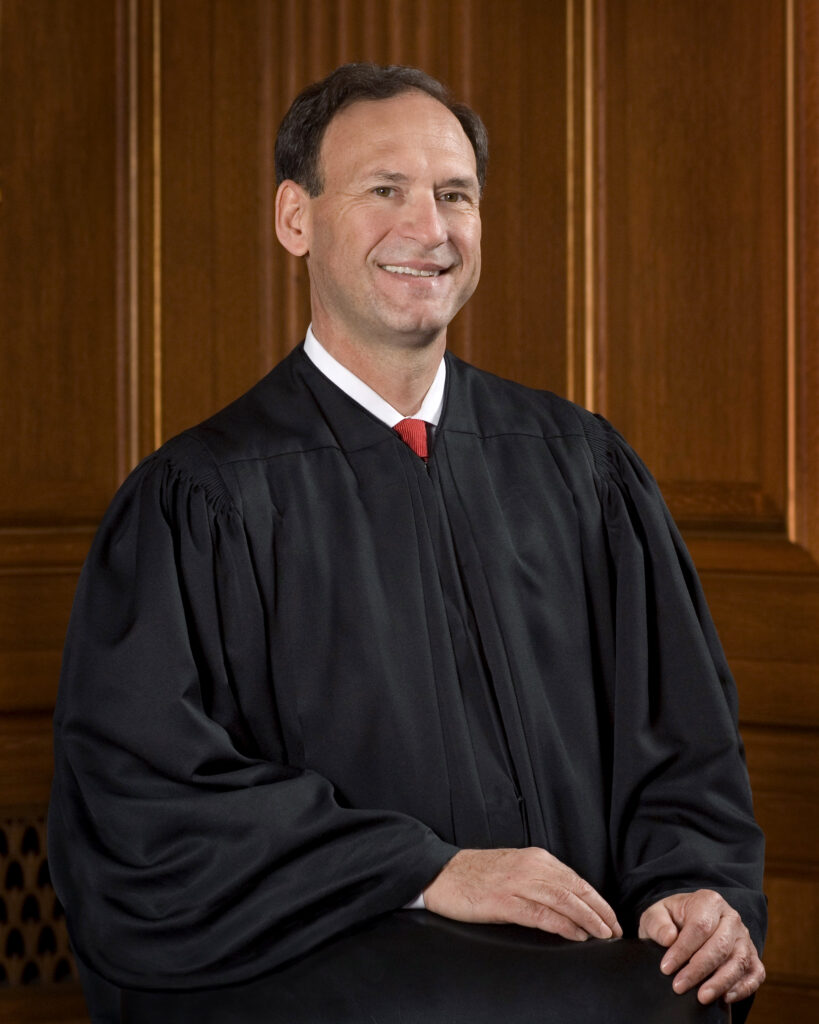
No related resources
Introduction
In Roe v. Wade (1973), in a ruling that overturned laws regulating abortion in the vast majority of states, the U.S. Supreme Court interpreted the U.S. Constitution as protecting a right to abortion. In his opinion for the Court, Justice Harry Blackmun (1908–1999) wrote: “The Constitution does not explicitly mention any right of privacy,” but in various decisions “the Court has recognized that a right of personal privacy, or a guarantee of certain areas or zones of privacy, does exist under the Constitution.” The Court concluded that the right to privacy “is broad enough to encompass a woman’s decision whether or not to terminate her pregnancy,” but it is “not unqualified, and must be considered against important state interests in regulation,” and that at a certain point in pregnancy, “the state interests as to protection of health, medical standards, and prenatal life, become dominant.”
The Court in Roe v. Wade set out a framework, based on the trimesters of pregnancy, specifying which state regulations were consistent with the Constitution: “(a) For the stage prior to approximately the end of the first trimester, the abortion decision and its effectuation must be left to the medical judgment of the pregnant woman’s attending physician; (b) For the stage subsequent to approximately the end of the first trimester, the state, in promoting its interest in the health of the mother, may, if it chooses, regulate the abortion procedure in ways that are reasonably related to maternal health; (c) For the stage subsequent to viability, the state in promoting its interest in the potentiality of human life may, if it chooses, regulate, and even proscribe, abortion except where it is necessary, in appropriate medical judgment, for the preservation of the life or health of the mother.” The Roe decision required states to bring their abortion laws in line with the Court’s policy framework, by making abortion legal during the first two trimesters, prior to what was understood to be the point of fetal viability.
In subsequent rulings, the Court grappled with whether states could impose a range of abortion restrictions, including parental-consent requirements, informed-consent provisions, waiting-period rules, and limits on which medical personnel could perform abortions and where they could be performed. In Planned Parenthood of Southeastern Pennsylvania v. Casey (1992), in the course of upholding state authority to enact a number of these restrictions but disallowing a spousal-notification requirement, the Supreme Court reaffirmed the central holding in Roe but modified slightly the approach to reviewing state abortion regulations. The central question going forward, the Court explained, would be whether a state regulation placed “an undue burden” on a woman’s ability to obtain an abortion prior to the point of “fetal viability,” which, as the Court acknowledged, was occurring earlier than the end of the second trimester on account of medical advances.
In subsequent decades, states continued to push back against the Court’s framework for reviewing abortion regulations, including by enacting laws prohibiting abortions some time before fetal viability, eventually leading to the Supreme Court’s decision in Dobbs v. Jackson Women’s Health Organization. In this case, the Court considered the legitimacy of a Mississippi law banning nearly all abortions performed after the fifteenth week of pregnancy.
The Supreme Court in Dobbs upheld the Mississippi law and overturned Roe and Casey, concluding, “The Constitution makes no reference to abortion, and no such right is implicitly protected by any constitutional provision.” In his opinion for the Court, Justice Samuel Alito argued: “It is time to heed the Constitution and return the issue of abortion to the people’s elected representatives.” The Court declared that laws regulating abortion were entitled to “a strong presumption of validity” and “must be sustained if there is a rational basis on which the legislature could have thought that it would serve legitimate state interests.”
Source: 597 U.S. ___ (2022), https://www.supremecourt.gov/opinions/21pdf/597us1r58_gebh.pdf
Justice ALITO1 delivered the opinion of the Court.
Abortion presents a profound moral issue on which Americans hold sharply conflicting views. Some believe fervently that a human person comes into being at conception and that abortion ends an innocent life. Others feel just as strongly that any regulation of abortion invades a woman’s right to control her own body and prevents women from achieving full equality. Still others in a third group think that abortion should be allowed under some but not all circumstances, and those within this group hold a variety of views about the particular restrictions that should be imposed.
For the first 185 years after the adoption of the Constitution, each state was permitted to address this issue in accordance with the views of its citizens. Then, in 1973, this Court decided Roe v. Wade. Even though the Constitution makes no mention of abortion, the Court held that it confers a broad right to obtain one. It did not claim that American law or the common law had ever recognized such a right, and its survey of history ranged from the constitutionally irrelevant (e.g., its discussion of abortion in antiquity) to the plainly incorrect (e.g., its assertion that abortion was probably never a crime under the common law). After cataloging a wealth of other information having no bearing on the meaning of the Constitution, the opinion concluded with a numbered set of rules much like those that might be found in a statute enacted by a legislature.
Under this scheme, each trimester of pregnancy was regulated differently, but the most critical line was drawn at roughly the end of the second trimester, which, at the time, corresponded to the point at which a fetus was thought to achieve “viability,” i.e., the ability to survive outside the womb. Although the Court acknowledged that states had a legitimate interest in protecting “potential life,” it found that this interest could not justify any restriction on previability abortions. The Court did not explain the basis for this line, and even abortion supporters have found it hard to defend Roe’s reasoning. One prominent constitutional scholar wrote that he “would vote for a statute very much like the one the Court end[ed] up drafting” if he were “a legislator,” but his assessment of Roe was memorable and brutal: Roe was “not constitutional law” at all and gave “almost no sense of an obligation to try to be.”2
At the time of Roe, 30 States still prohibited abortion at all stages. In the years prior to that decision, about a third of the States had liberalized their laws, but Roe abruptly ended that political process. It imposed the same highly restrictive regime on the entire nation, and it effectively struck down the abortion laws of every single state. As Justice Byron White aptly put it in his dissent, the decision represented the “exercise of raw judicial power,” and it sparked a national controversy that has embittered our political culture for a half century.
Eventually, in Planned Parenthood of Southeastern Pa. v. Casey (1992), the Court revisited Roe, but the Members of the Court split three ways. Two Justices expressed no desire to change Roe in any way. Four others wanted to overrule the decision in its entirety. And the three remaining Justices, who jointly signed the controlling opinion, took a third position. Their opinion did not endorse Roe’s reasoning, and it even hinted that one or more of its authors might have “reservations” about whether the Constitution protects a right to abortion. But the opinion concluded that stare decisis, which calls for prior decisions to be followed in most instances, required adherence to what it called Roe’s “central holding”—that a state may not constitutionally protect fetal life before “viability”—even if that holding was wrong. Anything less, the opinion claimed, would undermine respect for this Court and the rule of law.
Paradoxically, the judgment in Casey did a fair amount of overruling. Several important abortion decisions were overruled in toto, and Roe itself was overruled in part. Casey threw out Roe’s trimester scheme and substituted a new rule of uncertain origin under which states were forbidden to adopt any regulation that imposed an “undue burden” on a woman’s right to have an abortion. The decision provided no clear guidance about the difference between a “due” and an “undue” burden. But the three Justices who authored the controlling opinion “call[ed] the contending sides of a national controversy to end their national division” by treating the Court’s decision as the final settlement of the question of the constitutional right to abortion.
As has become increasingly apparent in the intervening years, Casey did not achieve that goal. Americans continue to hold passionate and widely divergent views on abortion, and state legislatures have acted accordingly. Some have recently enacted laws allowing abortion, with few restrictions, at all stages of pregnancy. Others have tightly restricted abortion beginning well before viability. And in this case, 26 states have expressly asked this Court to overrule Roe and Casey and allow the states to regulate or prohibit pre-viability abortions.
Before us now is one such state law. The State of Mississippi asks us to uphold the constitutionality of a law that generally prohibits an abortion after the 15th week of pregnancy—several weeks before the point at which a fetus is now regarded as “viable” outside the womb. In defending this law, the state’s primary argument is that we should reconsider and overrule Roe and Casey and once again allow each state to regulate abortion as its citizens wish. On the other side, respondents and the Solicitor General ask us to reaffirm Roe and Casey, and they contend that the Mississippi law cannot stand if we do so. Allowing Mississippi to prohibit abortions after 15 weeks of pregnancy, they argue, “would be no different than overruling Casey and Roe entirely.” They contend that “no half-measures” are available and that we must either reaffirm or overrule Roe and Casey.
We hold that Roe and Casey must be overruled. The Constitution makes no reference to abortion, and no such right is implicitly protected by any constitutional provision, including the one on which the defenders of Roe and Casey now chiefly rely—the due process clause of the Fourteenth Amendment. That provision has been held to guarantee some rights that are not mentioned in the Constitution, but any such right must be “deeply rooted in this nation’s history and tradition” and “implicit in the concept of ordered liberty.”3
The right to abortion does not fall within this category. Until the latter part of the 20th century, such a right was entirely unknown in American law. Indeed, when the Fourteenth Amendment was adopted, three quarters of the states made abortion a crime at all stages of pregnancy. The abortion right is also critically different from any other right that this Court has held to fall within the Fourteenth Amendment’s protection of “liberty.” Roe’s defenders characterize the abortion right as similar to the rights recognized in past decisions involving matters such as intimate sexual relations, contraception, and marriage, but abortion is fundamentally different, as both Roe and Casey acknowledged, because it destroys what those decisions called “fetal life” and what the law now before us describes as an “unborn human being.”
Stare decisis, the doctrine on which Casey’s controlling opinion was based, does not compel unending adherence to Roe’s abuse of judicial authority. Roe was egregiously wrong from the start. Its reasoning was exceptionally weak, and the decision has had damaging consequences. And far from bringing about a national settlement of the abortion issue, Roe and Casey have enflamed debate and deepened division.
It is time to heed the Constitution and return the issue of abortion to the people’s elected representatives. “The permissibility of abortion, and the limitations, upon it, are to be resolved like most important questions in our democracy: by citizens trying to persuade one another and then voting.”4 That is what the Constitution and the rule of law demand....
... Stare decisis plays an important role in our case law, and we have explained that it serves many valuable ends. It protects the interests of those who have taken action in reliance on a past decision. It “reduces incentives for challenging settled precedents, saving parties and courts the expense of endless relitigation.”5 It fosters “evenhanded” decisionmaking by requiring that like cases be decided in a like manner. It “contributes to the actual and perceived integrity of the judicial process.”6 And it restrains judicial hubris and reminds us to respect the judgment of those who have grappled with important questions in the past. “Precedent is a way of accumulating and passing down the learning of past generations, a font of established wisdom richer than what can be found in any single judge or panel of judges.”7
We have long recognized, however, that stare decisis is “not an inexorable command,” and it “is at its weakest when we interpret the Constitution.”8 It has been said that it is sometimes more important that an issue “be settled than that it be settled right.”9 But when it comes to the interpretation of the Constitution—the “great charter of our liberties,” which was meant “to endure through a long lapse of ages,”—we place a high value on having the matter “settled right.”10 In addition, when one of our constitutional decisions goes astray, the country is usually stuck with the bad decision unless we correct our own mistake. An erroneous constitutional decision can be fixed by amending the Constitution, but our Constitution is notoriously hard to amend. Therefore, in appropriate circumstances we must be willing to reconsider and, if necessary, overrule constitutional decisions.
Some of our most important constitutional decisions have overruled prior precedents. We mention three. In Brown v. Board of Education (1954), the Court repudiated the “separate but equal” doctrine, which had allowed states to maintain racially segregated schools and other facilities. In so doing, the Court overruled the infamous decision in Plessy v. Ferguson (1896), along with six other Supreme Court precedents that had applied the separate-but-equal rule.
In West Coast Hotel Co. v. Parrish (1937), the Court overruled Adkins v. Children’s Hospital of D.C. (1923), which had held that a law setting minimum wages for women violated the “liberty” protected by the Fifth Amendment’s due process clause. West Coast Hotel signaled the demise of an entire line of important precedents that had protected an individual liberty right against state and federal health and welfare legislation.
Finally, in West Virginia Bd. of Ed. v. Barnette (1943), after the lapse of only three years, the Court overruled Minersville School Dist. v. Gobitis (1940), and held that public school students could not be compelled to salute the flag in violation of their sincere beliefs. Barnette stands out because nothing had changed during the intervening period other than the Court’s belated recognition that its earlier decision had been seriously wrong.
On many other occasions, this Court has overruled important constitutional decisions. ... Without these decisions, American constitutional law as we know it would be unrecognizable, and this would be a different country.
No Justice of this Court has ever argued that the Court should never overrule a constitutional decision, but overruling a precedent is a serious matter. It is not a step that should be taken lightly. Our cases have attempted to provide a framework for deciding when a precedent should be overruled, and they have identified factors that should be considered in making such a decision. In this case, five factors weigh strongly in favor of overruling Roe and Casey: the nature of their error, the quality of their reasoning, the “workability” of the rules they imposed on the country, their disruptive effect on other areas of the law, and the absence of concrete reliance....
We must now decide what standard will govern if state abortion regulations undergo constitutional challenge and whether the law before us satisfies the appropriate standard.
Under our precedents, rational-basis review11 is the appropriate standard for such challenges. As we have explained, procuring an abortion is not a fundamental constitutional right because such a right has no basis in the Constitution’s text or in our nation’s history.
It follows that the states may regulate abortion for legitimate reasons, and when such regulations are challenged under the Constitution, courts cannot “substitute their social and economic beliefs for the judgment of legislative bodies.”12 That respect for a legislature’s judgment applies even when the laws at issue concern matters of great social significance and moral substance.
A law regulating abortion, like other health and welfare laws, is entitled to a “strong presumption of validity.”13 It must be sustained if there is a rational basis on which the legislature could have thought that it would serve legitimate state interests. These legitimate interests include respect for and preservation of prenatal life at all stages of development; the protection of maternal health and safety; the elimination of particularly gruesome or barbaric medical procedures; the preservation of the integrity of the medical profession; the mitigation of fetal pain; and the prevention of discrimination on the basis of race, sex, or disability....
- 1. Justice Samuel Alito (1950–).
- 2. Justice Alito’s note: J. Ely, “The Wages of Crying Wolf: A Comment on Roe v. Wade,” 82 Yale L. J. 920, 926, 947 (1973) (Ely).
- 3. Justice Alito’s note: Washington v. Glucksberg (1997).
- 4. Justice Alito’s note: Casey (Scalia, J., concurring in judgment in part and dissenting in part).
- 5. Justice Alito’s note: Kimble, 576 U.S., at 455.
- 6. Justice Alito’s note: Payne, 501 U.S., at 827.
- 7. Justice Alito’s note: N. Gorsuch, A Republic, If You Can Keep It, 217 (2019).
- 8. Justice Alito’s note: Pearson v. Callahan 555 U.S. 223, 233 (2009).
- 9. Justice Alito’s note: Kimble, 576 U.S., at 455.
- 10. Justice Alito’s note: Martin v. Hunter’s Lessee, 1 Wheat. 304, 326 (1816).
- 11. Rational-basis review asks whether the government’s actions are rationally related to a legitimate government interest.
- 12. Justice Alito’s note: Ferguson, 372 U.S. at 729–730.
- 13. Justice Alito’s note: Heller v. Doe, 509 U.S. 312, 319 (1993).

Conversation-based seminars for collegial PD, one-day and multi-day seminars, graduate credit seminars (MA degree), online and in-person.
